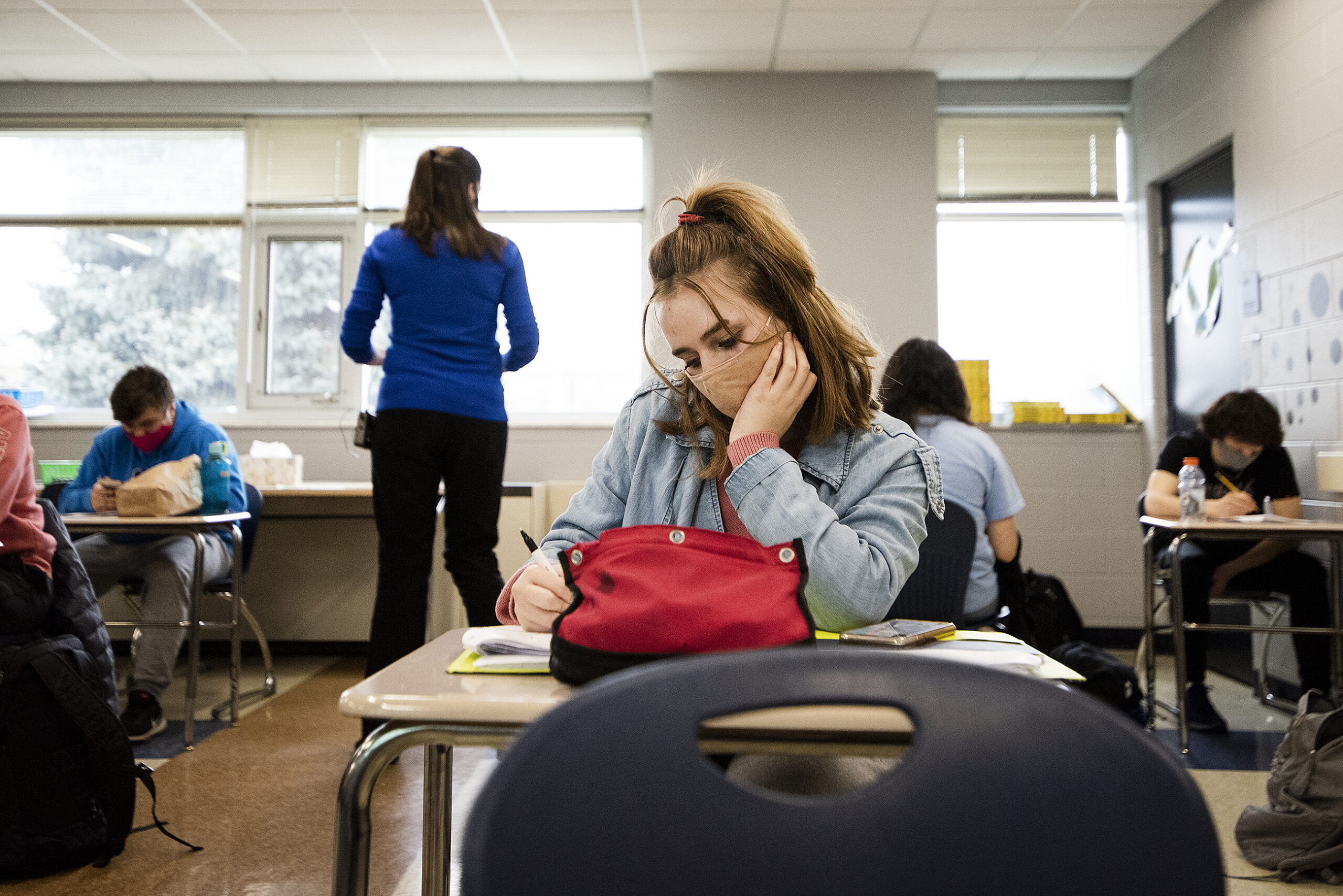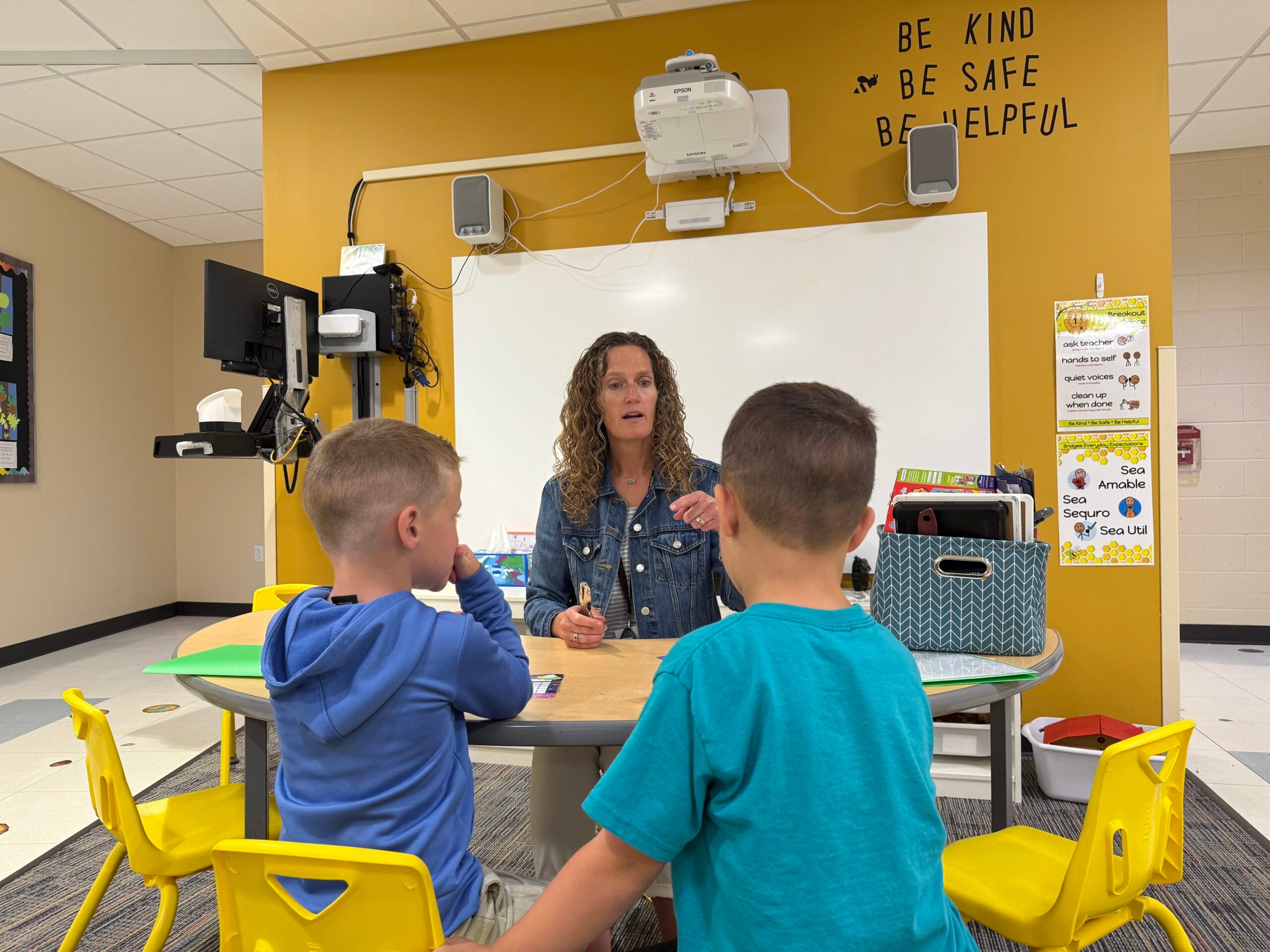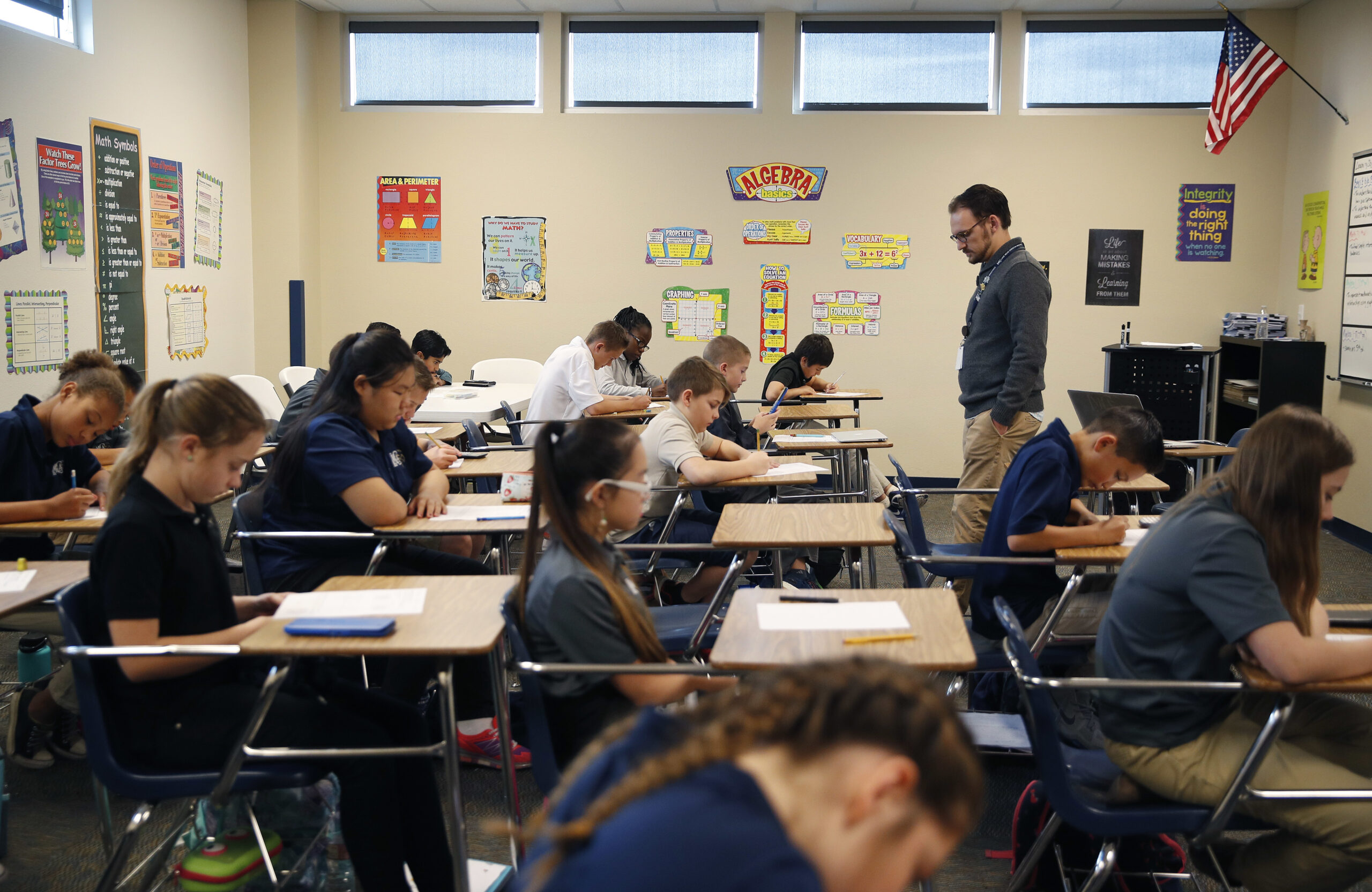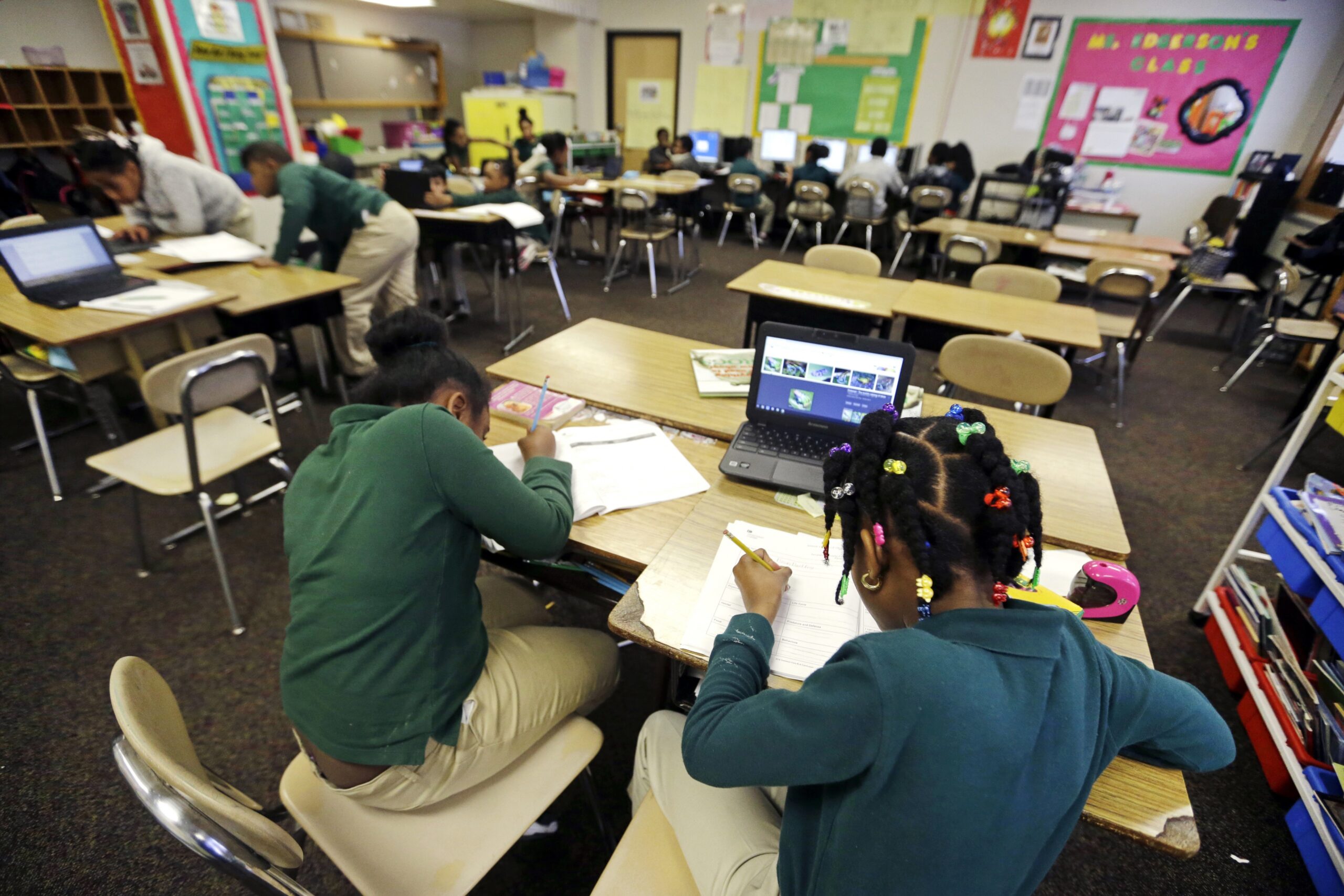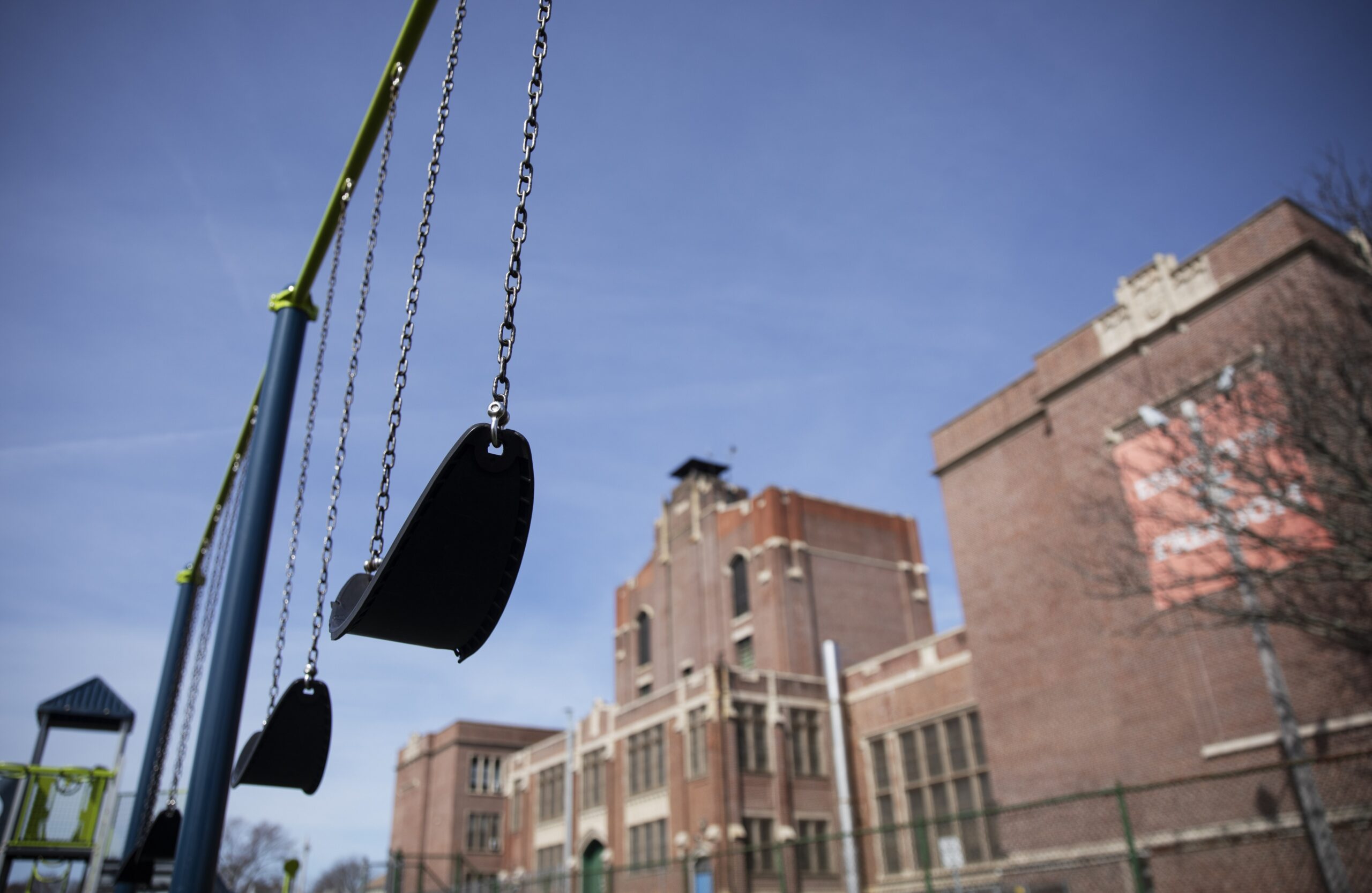Wisconsin’s urban schools were more likely to have students learning all or mostly virtually, compared to less than half of suburban schools and less than 20 percent of rural schools for the 2020-21 school year, according to a new report.
The Wisconsin Policy Forum analyzed data from a survey of all Wisconsin schools participating in the National School Lunch Program, which captures most public schools and a number of private schools. About 80 percent of participating schools responded, providing information about their instruction modes from August to December.
Ari Brown, one of the researchers, said this disproportionately impacted students in cities and students of color.
News with a little more humanity
WPR’s “Wisconsin Today” newsletter keeps you connected to the state you love without feeling overwhelmed. No paywall. No agenda. No corporate filter.
“The big finding here is that there’s a wide gap between what’s happening in schools in Wisconsin that are based in cities or the biggest population center in each regional area. And because Wisconsin’s student of color populations tend to be located in those schools, it also looks disproportionate between schools that have a majority student of color population versus schools with fewer than 25 percent students of color,” Brown said.
Brown and fellow researcher Jason Stein found that in December, between 80 and 90 percent of urban schools were teaching all or mostly virtually, depending on grade level, compared to 40 to 50 percent of suburban and 14 to 18 percent of rural schools.
Schools increasingly went virtual from September to December, which corresponded with Wisconsin’s surge in coronavirus cases. Positive COVID-19 cases increased steadily from August to mid-November, ending the year at a weekly average of 2,101 positive cases per day.
“When looking at each of these individual groups, no matter how you broke it down, basically every group of schools became more virtual over the course of the fall,” said Brown. “Especially in December, when we were deep enough into the pandemic to know a lot about the science of how various things work, but also at the highest level of COVID cases. There were a lot of different decisions that had to be made, and I think you really see that reflected in places like the suburbs.”
The data is limited — the researchers, for example, could not tell from the schools’ responses whether a school that was learning 40 percent virtually meant all students were learning in a hybrid model that put them in person two days a week, if 40 percent of their student body was learning virtually every day while the remainder were in person, or if they had to close their school building for 40 percent of the month in order to quarantine after possible exposures.
“There isn’t a way in the data to distinguish between those two — what is school policy and what is parent choice,” said Stein.
Because it was filled out by month, it also doesn’t capture how the instruction modes might have changed from the beginning to the end of the month. This gets particularly complicated around the holidays, when some schools switched preemptively to all-virtual learning for a week or two after Thanksgiving, for example, under the assumption that families may have gathered with people outside their household, potentially spreading the virus to others.
Still, said Brown, with the lack of statewide data available about how schools are learning across the state since the start of the school year, even limited information offers a better picture of how COVID-19 has affected schools.
“What we can’t say is, you know, what exactly students in X district are doing on any given day in October, because that’s just not the level this data drills down to,” said Brown. “There is no perfect data available on this topic, but it is such a hot-button and important issue that touches the lives of just about everyone in the entire state that any way to get at it, we felt it was important to evaluate it, given that this is the best data we have available at a statewide level at this point.”
The biggest predictor of whether a school learned virtually was locale — urban, suburban or rural — but the data also show schools with a majority of students of color were more likely to be virtual, as were schools with a majority of students on the free- and reduced-price lunch program. Public schools were more likely to be learning virtually than the private schools participating in the National School Lunch Program, and public schools were also more likely to use a hybrid learning model that had students learning either in person or virtually, depending on the day. Private schools were more likely than public schools to stay in person as COVID-19 cases rose.
The data doesn’t show why particular types of schools were more likely to learn in-person or virtually. The researchers suggested it’s likely a combination of class sizes — usually smaller in private, suburban and rural schools — building age and ventilation, COVID-19 spread within the area, availability of broadband and how different stakeholders, from parents to administrators to teachers, felt about in-person versus virtual learning.
Stein noted the effects of different instruction methods will likely differ by district, by school and even by individual student — that is, some students may have learned and retained more while learning virtually than others.
“We do have more data now about what happened, but I think it’s important not to jump to conclusions about what the effect of that is,” Stein said. “It seems reasonable to get the best kind of assessment we can about what the impact of this has been on student learning, and then with some urgency try to respond to that as best we can as a state.”
Wisconsin Public Radio, © Copyright 2025, Board of Regents of the University of Wisconsin System and Wisconsin Educational Communications Board.

